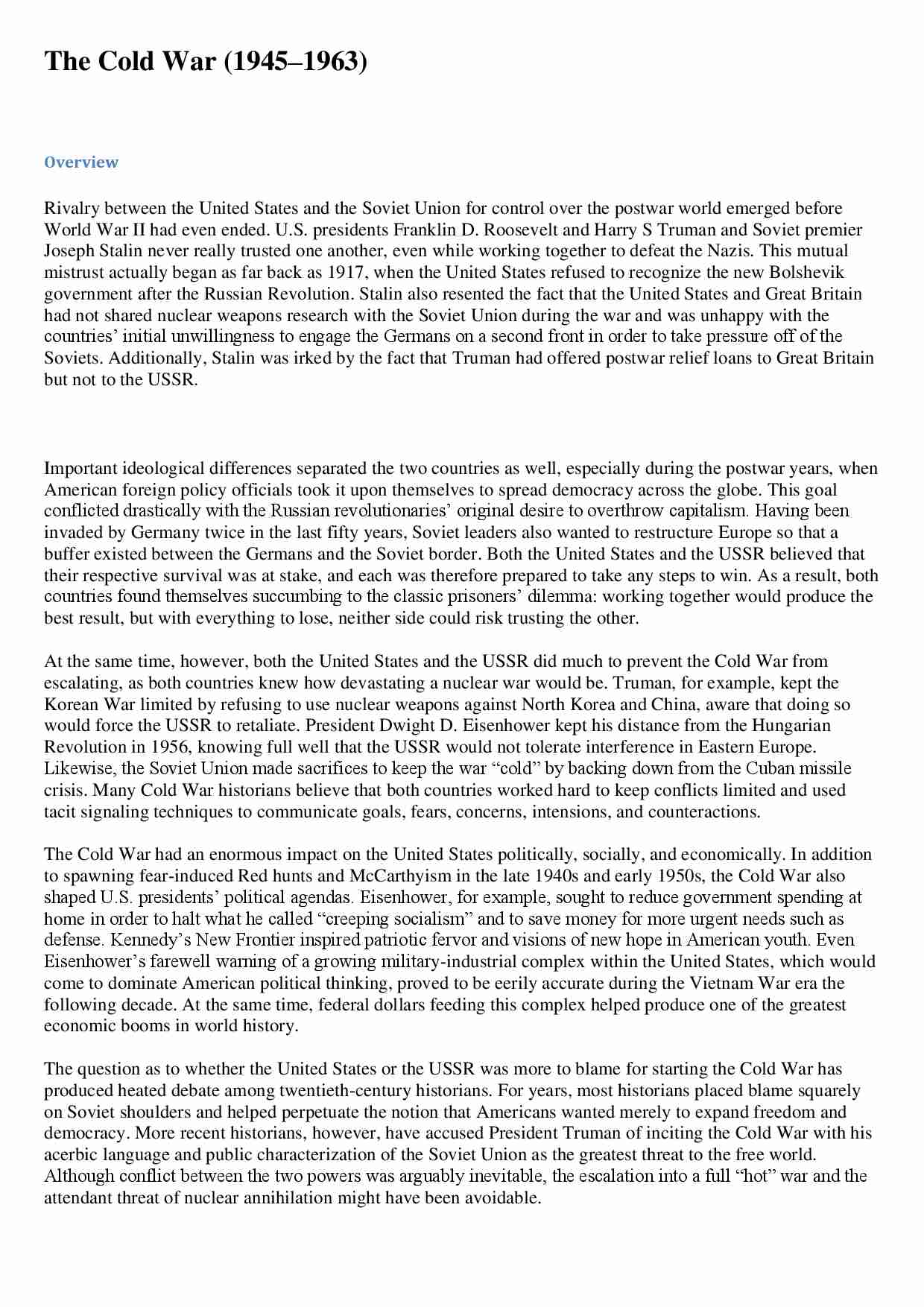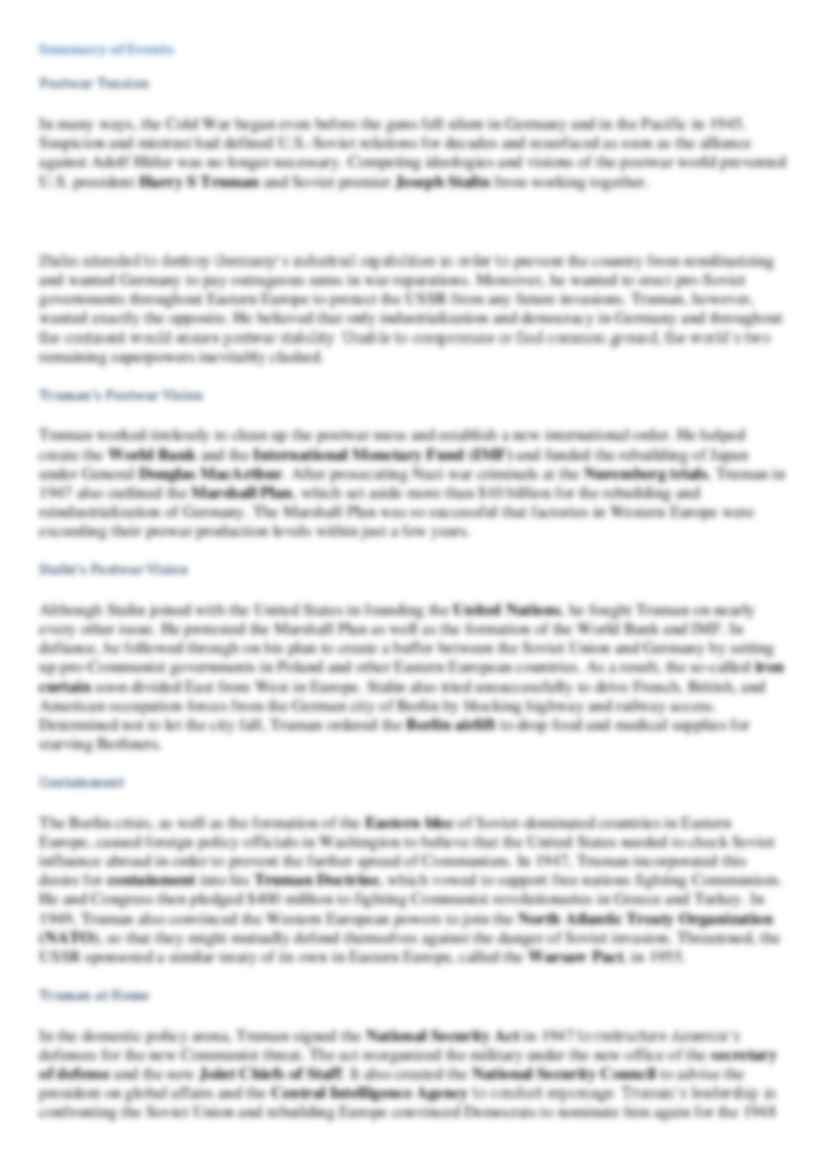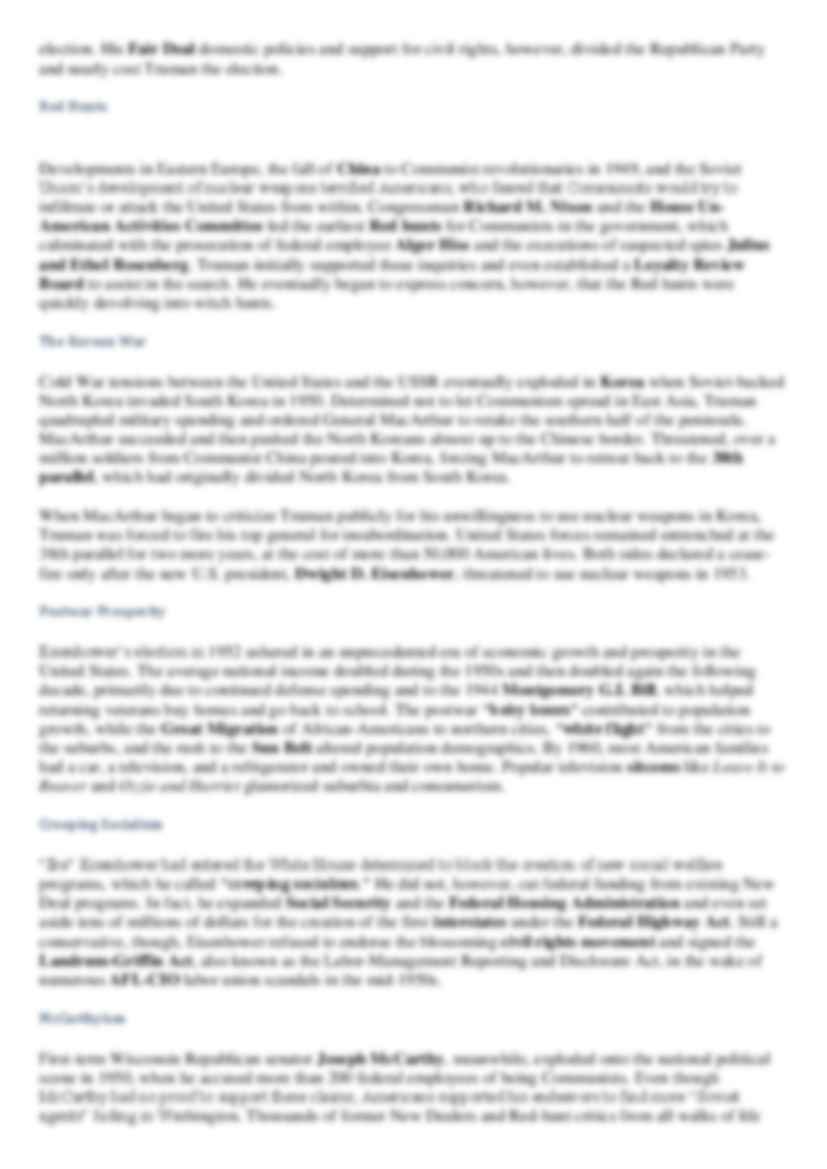To tylko jedna z 29 stron tej notatki. Zaloguj się aby zobaczyć ten dokument.
Zobacz
całą notatkę



The Cold War (1945-1963)
Overview
Rivalry between the United States and the Soviet Union for control over the postwar world emerged before World War II had even ended. U.S. presidents Franklin D. Roosevelt and Harry S Truman and Soviet premier Joseph Stalin never really trusted one another, even while working together to defeat the Nazis. This mutual mistrust actually began as far back as 1917, when the United States refused to recognize the new Bolshevik government after the Russian Revolution. Stalin also resented the fact that the United States and Great Britain had not shared nuclear weapons research with the Soviet Union during the war and was unhappy with the countries' initial unwillingness to engage the Germans on a second front in order to take pressure off of the Soviets. Additionally, Stalin was irked by the fact that Truman had offered postwar relief loans to Great Britain but not to the USSR.
Important ideological differences separated the two countries as well, especially during the postwar years, when American foreign policy officials took it upon themselves to spread democracy across the globe. This goal conflicted drastically with the Russian revolutionaries' original desire to overthrow capitalism. Having been invaded by Germany twice in the last fifty years, Soviet leaders also wanted to restructure Europe so that a buffer existed between the Germans and the Soviet border. Both the United States and the USSR believed that their respective survival was at stake, and each was therefore prepared to take any steps to win. As a result, both countries found themselves succumbing to the classic prisoners' dilemma: working together would produce the best result, but with everything to lose, neither side could risk trusting the other.
At the same time, however, both the United States and the USSR did much to prevent the Cold War from escalating, as both countries knew how devastating a nuclear war would be. Truman, for example, kept the Korean War limited by refusing to use nuclear weapons against North Korea and China, aware that doing so would force the USSR to retaliate. President Dwight D. Eisenhower kept his distance from the Hungarian Revolution in 1956, knowing full well that the USSR would not tolerate interference in Eastern Europe. Likewise, the Soviet Union made sacrifices to keep the war “cold” by backing down from the Cuban missile crisis. Many Cold War historians believe that both countries worked hard to keep conflicts limited and used tacit signaling techniques to communicate goals, fears, concerns, intensions, and counteractions.
The Cold War had an enormous impact on the United States politically, socially, and economically. In addition to spawning fear-induced Red hunts and McCarthyism in the late 1940s and early 1950s, the Cold War also shaped U.S. presidents' political agendas. Eisenhower, for example, sought to reduce government spending at home in order to halt what he called “creeping socialism” and to save money for more urgent needs such as defense. Kennedy's New Frontier inspired patriotic fervor and visions of new hope in American youth. Even Eisenhower's farewell warning of a growing military-industrial complex within the United States, which would come to dominate American political thinking, proved to be eerily accurate during the Vietnam War era the following decade. At the same time, federal dollars feeding this complex helped produce one of the greatest economic booms in world history.
... zobacz całą notatkę






Komentarze użytkowników (0)